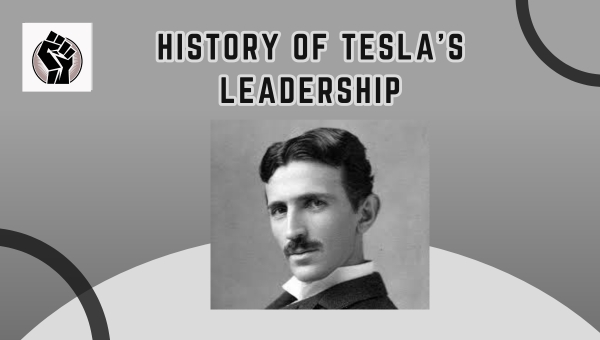Imagine a world where electric vehicles dominate roads, reshaping the future of transportation. Tesla, led by its visionary leaders, has turned this vision into reality. The Ceo Of Tesla has continually steered the company through challenges and triumphs, making it a global icon of innovation and sustainability.
From groundbreaking technologies to bold strategies, Tesla’s leadership has been pivotal in transforming the EV industry. In this article, we dive into Tesla’s leadership journey, exploring the impact of its CEOs, their vision, and the challenges they faced. Get ready to uncover the dynamic history of leadership that redefined mobility.
History of Tesla’s Leadership
Tesla’s leadership history is a fascinating journey of visionaries who shaped the company to become a pioneer in electric vehicles and clean energy. From its early beginnings to key leadership decisions, understanding these milestones offers insights into Tesla’s transformative growth.

The Founding Years of Tesla
Tesla was founded in 2003 by Martin Eberhard and Marc Tarpenning with the goal of revolutionizing the automotive industry. Their vision was clear—to produce electric vehicles that were not only eco-friendly but also high-performing and desirable. Eberhard, as the first CEO, played a crucial role in setting the foundation for Tesla’s mission.
During these formative years, the leadership focused heavily on designing and developing the Tesla Roadster, the company’s first electric sports car. The Roadster was a bold initiative that aimed to prove electric vehicles could rival traditional gasoline-powered cars in both performance and design. This initial leadership phase was instrumental in establishing Tesla’s identity as a forward-thinking company committed to innovation.
While funding was a major challenge, the involvement of early investors, including Elon Musk, bolstered Tesla’s financial stability. Musk’s entry as chairman of the board marked a significant shift, as he brought a more ambitious perspective to Tesla’s growth strategy. These foundational decisions laid the groundwork for Tesla’s future successes.
Defining Moments in Tesla’s Leadership Journey
Tesla’s leadership journey is punctuated by critical moments that have shaped its path to becoming a leader in electric vehicles and sustainable energy. Here are some key turning points:
1. Elon Musk’s Appointment as CEO (2008)
The most significant moment came when Elon Musk took the helm in 2008. His bold vision and innovative mindset transformed Tesla from a struggling startup into an industry powerhouse.
Musk’s decision to prioritize the launch of the Model S during the financial crisis was particularly impactful, solidifying Tesla’s reputation for high-performance electric vehicles and setting new standards in the automotive industry.
2. The Launch of Gigafactories
Another landmark decision was the establishment of Gigafactories—massive production facilities aimed at scaling battery production and reducing costs.
This strategic move not only enhanced Tesla’s manufacturing capabilities but also made electric vehicles more accessible to consumers, driving widespread adoption.
3. Diversification into Renewable Energy
Musk’s leadership extended beyond automobiles as he pushed for investments in renewable energy solutions, such as solar panels and energy storage systems. This diversification reflected a broader vision for sustainability, reinforcing Tesla’s commitment to a greener future and expanding its market reach.
4. Navigating Regulatory Challenges
Throughout its journey, Tesla faced various regulatory hurdles. Musk’s proactive engagement with regulators and commitment to transparency helped navigate these challenges, maintaining consumer trust while fostering innovation.
5. Continuous Adaptation and Innovation
Tesla’s leadership has consistently demonstrated an ability to adapt and innovate in response to market demands and challenges. Each decision made during these defining moments has contributed to Tesla’s evolution into a leader not just in electric vehicles but also in sustainable energy solutions.
These pivotal moments illustrate how strategic leadership decisions have propelled Tesla forward, ensuring its place at the forefront of the automotive and energy industries.
Also Read: Uber CEO History: A Journey of Leadership
List of Tesla CEOs Through Time
Tesla’s journey as a pioneer in electric vehicles has been significantly shaped by its leadership over the years. Each CEO brought their unique vision and strategies, driving the company toward innovation and growth. Let’s explore the individuals who have led Tesla and how their styles made an impact.

Leaders Who Shaped Tesla’s Trajectory
Tesla has seen a few remarkable leaders since its inception, each contributing to its development in distinct ways.
Here’s a timeline of Tesla’s CEOs and their notable achievements:
- Martin Eberhard (2003–2007):
As one of Tesla’s co-founders, Eberhard focused on making electric vehicles mainstream. Under his leadership, Tesla introduced its first product, the Tesla Roadster, which set the stage for the company’s future. His dedication to innovation laid the groundwork for Tesla’s rise.
Key Achievement: Launching the Tesla Roadster. - Michael Marks (Interim CEO, 2007–2008):
Marks stepped in as an interim CEO, aiming to stabilize the company during its transition period. He ensured that Tesla maintained its momentum as it scaled production. - Ze’ev Drori (2008):
Drori brought a disciplined approach to Tesla’s operations. His short tenure saw the Roadster move closer to full-scale production.
Key Achievement: Overcoming early production challenges. - Elon Musk (2008–Present):
Musk transformed Tesla from a niche automaker into a global leader in electric vehicles. His bold vision for sustainable energy and relentless pursuit of innovation have been pivotal. Through his leadership, Tesla expanded its product line with the Model S, Model 3, Model X, and Model Y.
Key Achievements:- Scaling Tesla’s production capabilities.
- Establishing Tesla as a household name in clean energy.
- Introducing groundbreaking technologies like Autopilot.
Comparing the Leadership Styles of Tesla’s CEOs
Tesla’s leaders have approached the company’s challenges and opportunities differently, each leaving a lasting impression.
Here’s an analysis of their leadership styles and contributions:
- Martin Eberhard:
- Style: Visionary and product-focused.
- Impact: Focused on creating a viable electric car for the market. His efforts were foundational in establishing Tesla’s reputation for innovation.
- Michael Marks:
- Style: Stabilizing and transitional.
- Impact: Played a crucial role in ensuring continuity during a critical phase in Tesla’s early history.
- Ze’ev Drori:
- Style: Operational and disciplined.
- Impact: Addressed production challenges and streamlined operations during a challenging time.
- Elon Musk:
- Style: Transformational and aggressive.
- Impact: Revolutionized the company’s trajectory by focusing on scalability, innovation, and sustainability. Musk’s leadership style has also fostered a culture of risk-taking and technological advancement.
It’s evident that Tesla’s growth has been influenced by diverse leadership approaches. Each CEO contributed uniquely, but it was Elon Musk’s long-term vision and execution that propelled Tesla to its current status as a global leader in electric vehicles.
Impact of CEOs on Tesla’s Growth
The leadership of Tesla’s CEOs has been a driving force behind the company’s remarkable evolution. Each CEO brought unique strategies to the table, focusing on innovation, market expansion, and overcoming financial hurdles. Let’s explore how these leaders steered Tesla through groundbreaking innovations and significant financial advancements.
Innovations Introduced Under Various CEOs
Tesla’s growth story is largely intertwined with the innovations championed by its CEOs. Each leader played a pivotal role in shaping the company’s technological and product roadmap, pushing the boundaries of what electric vehicles (EVs) could achieve.
- Martin Eberhard (2003-2007)
- Under Eberhard’s leadership, Tesla introduced its first car, the Tesla Roadster, in 2006.
- This vehicle demonstrated the potential of EVs by offering a high-performance car with zero emissions.
- Elon Musk (2008-Present)
- Musk spearheaded the launch of the Model S in 2012, a luxury sedan that redefined EV standards with its impressive range and cutting-edge features.
- He introduced the Tesla Autopilot system, which brought semi-autonomous driving capabilities to the mainstream.
- The Model 3, launched in 2017, marked a major step toward affordability, making EVs accessible to a broader market.
- He also led the development of Tesla’s energy products, including Powerwall and Solar Roof, broadening the company’s focus beyond automobiles.
These innovations showcased how Tesla’s leadership consistently prioritized technological advancement and sustainability, driving the company’s reputation as a pioneer in the EV industry.
Financial Turnarounds and Market Expansion
Tesla’s financial journey has been marked by both challenges and triumphs. The company’s leaders have played a critical role in navigating these complexities, ensuring its sustained growth and presence in the global market.
- Elon Musk’s Financial Strategies
- Musk stepped in during Tesla’s early financial struggles, personally investing millions to prevent bankruptcy in 2008.
- He implemented a bold strategy to focus on high-end models first, using profits to fund the development of more affordable vehicles like the Model 3.
- By 2020, Tesla achieved consistent profitability, a milestone that silenced skeptics and solidified its position in the market.
- Global Market Penetration
- Under Musk’s leadership, Tesla expanded its reach, establishing Gigafactories in key locations like China, Germany, and the U.S.
- These facilities not only boosted production capacity but also allowed Tesla to cater to regional demands efficiently.
- The company has successfully entered emerging markets, making EVs more widespread globally.
Tesla’s CEOs have proven adept at overcoming financial obstacles while expanding the company’s market presence. Their leadership has been instrumental in transforming Tesla from a niche player into a global automotive and energy powerhouse.
Tesla CEO’s Vision Beyond Automobiles
Tesla has consistently pushed boundaries beyond manufacturing electric vehicles, driven by the innovative visions of its leaders. The Ceo Of Tesla has played a vital role in shaping the company’s broader mission, focusing on clean energy solutions and global expansion.

Let’s explore how their leadership has extended Tesla’s influence far beyond the automotive industry.
Driving Sustainability and Energy Revolution
One of the defining aspects of Tesla’s leadership has been its commitment to sustainability and the energy revolution. Tesla CEOs have championed the transition to renewable energy, emphasizing the integration of clean energy solutions into everyday life. This focus is not just an extension of their electric vehicle success but a declaration of their broader goals to combat climate change.
Key initiatives spearheaded by Tesla under its leadership include:
- The Launch of Tesla Energy Products: Tesla introduced products like the Powerwall, Powerpack, and Megapack, designed to store renewable energy efficiently for homes, businesses, and utilities. These innovations aim to reduce dependency on traditional power grids.
- Solar Energy Solutions: The acquisition of SolarCity in 2016 marked a bold step toward solar energy integration. Through solar panels and roofs, Tesla has made renewable energy more accessible.
- Advancing Battery Technology: Tesla’s investment in cutting-edge battery technology has enabled advancements in energy storage, further promoting renewable energy adoption.
Tesla’s efforts in sustainability demonstrate a vision that extends beyond vehicles. The company strives to create a comprehensive ecosystem of clean energy solutions, showcasing its leadership in the energy revolution.
Expanding Tesla’s Global Footprint
Tesla’s CEOs have also worked tirelessly to expand the company’s presence on the global stage. Their strategies are aimed at entering emerging markets, building a global supply chain, and establishing Tesla as a household name worldwide.
Crucial steps taken to expand Tesla’s reach include:
- Construction of Gigafactories Worldwide: Tesla has built Gigafactories in locations such as the United States, China, and Germany. These factories not only enhance production capabilities but also bring Tesla closer to its global customer base.
- Entering Emerging Markets: Tesla has entered markets in Asia, Europe, and the Middle East, focusing on countries with growing demand for electric vehicles and renewable energy.
- Localized Manufacturing and Services: By establishing factories and service centers in different regions, Tesla has reduced manufacturing costs and delivery times, making its products more competitive globally.
Through these efforts, Tesla’s leadership has fostered a vision that prioritizes accessibility and innovation, ensuring the company’s products and technologies reach diverse markets. This global expansion aligns with their broader mission to promote sustainable energy solutions worldwide.
Tesla’s trajectory under its leaders reflects an ambition to reshape the future of energy and extend its influence far beyond the automotive realm. Their unwavering focus on clean energy and global reach continues to position Tesla as a trailblazer in sustainability and innovation.
Also Read: The Story of Toyota CEO | From Vision to Victory
Challenges Faced by Tesla CEOs
Tesla, as a pioneer in the electric vehicle (EV) and clean energy sectors, has encountered numerous challenges throughout its journey. The Ceo Of Tesla at different times had to navigate complex issues that ranged from technical setbacks to market pressures. Here’s a detailed breakdown of the challenges faced by Tesla CEOs:
1. Production and Scaling Issues
- Mass Production of EVs: One of the most significant challenges for Tesla’s CEOs was scaling up production to meet the growing demand for electric vehicles. The transition from producing limited quantities to mass production required massive investments, advanced manufacturing technology, and efficient processes.
- Example: The “production hell” faced during the rollout of the Tesla Model 3 highlighted the difficulties in meeting production targets.
- Supply Chain Complexity: Managing a robust supply chain for batteries and other EV components posed a critical hurdle. Shortages of raw materials like lithium and cobalt further complicated the scaling process.
- Automation Problems: Over-reliance on automated manufacturing systems led to delays and inefficiencies. Tesla had to recalibrate its approach to balance automation with human labor.
2. Financial Struggles
- Cash Flow Issues: In its early years, Tesla faced recurring cash flow problems. Funding large-scale projects such as Gigafactories, research, and product development often stretched the company’s finances thin.
- Example: Tesla was on the verge of bankruptcy multiple times, requiring its CEOs to secure additional funding through investors and loans.
- Stock Volatility: Tesla’s stock price has been highly volatile, often influenced by market sentiment and CEO announcements. This posed challenges in maintaining investor confidence.
- Debt Management: The company often operated with significant debt levels, which added pressure on CEOs to deliver consistent results and assure creditors.
3. Technological and Quality Challenges
- Battery Development: Developing efficient, affordable, and sustainable batteries has been a cornerstone of Tesla’s mission. However, breakthroughs in battery technology are complex and require significant R&D efforts.
- Quality Concerns: Tesla faced criticism for quality issues, including panel gaps, paint inconsistencies, and software glitches in its early models. Addressing these concerns while maintaining production speed was a persistent challenge.
- Autonomous Driving Technology: Tesla’s ambition to lead in self-driving technology brought its own set of obstacles. Regulatory hurdles, safety concerns, and competitive pressure from other automakers added to the complexity.
4. Market Competition
- Emerging Competitors: The EV market is becoming increasingly crowded with traditional automakers and startups entering the space. Tesla CEOs have had to differentiate the brand while staying ahead in terms of innovation and market share.
- Pricing Pressure: As competitors produce more affordable EVs, Tesla has faced challenges in balancing cost reduction with maintaining high-quality standards.
- Government Policies and Incentives: Tesla’s growth has often depended on favorable government incentives for EVs. Changes or reductions in such incentives posed challenges for maintaining sales momentum.
5. Workforce and Organizational Challenges
- High Employee Turnover: Tesla has experienced high turnover among its executives and workforce. Retaining talent and maintaining organizational stability have been ongoing concerns.
- Workplace Culture: Reports of long hours, high-pressure environments, and demanding work culture have occasionally led to dissatisfaction among employees and public scrutiny.
- Unionization Efforts: Attempts by workers to unionize have also posed challenges for Tesla’s leadership, as they navigate labor relations while retaining operational efficiency.
6. Global Expansion
- Local Regulations: Expanding into international markets brought regulatory challenges, including compliance with local laws and standards.
- Example: Entry into China required navigating complex trade rules and forming partnerships with local entities.
- Logistical Hurdles: Establishing a global supply chain and distribution network required substantial effort and resources.
- Cultural Barriers: Tesla CEOs had to address diverse consumer preferences and adapt their strategies to succeed in different markets.
7. Reputation and Public Perception
- CEO Controversies: Statements and actions by Tesla CEOs have occasionally attracted significant media attention, sometimes negatively impacting Tesla’s reputation.
- Example: Public controversies, such as outspoken behavior or polarizing tweets, have led to regulatory scrutiny and affected stock performance.
- Safety Concerns: Incidents involving Tesla vehicles, particularly in autonomous driving mode, have raised questions about safety. CEOs had to work on rebuilding trust while improving technology.
- Environmental Criticism: Although Tesla champions sustainability, criticism over battery production’s environmental impact has been a challenge for its leaders to address.
8. Regulatory and Legal Challenges
- Compliance with Emission Standards: Tesla faced hurdles in meeting regulatory standards across different countries, especially as EV-specific rules evolved.
- Litigation: Legal challenges, including patent disputes and product liability lawsuits, added to the complexity of leading Tesla.
- Example: Allegations of misleading investors and inflated production claims have occasionally led to lawsuits against the company.
9. Economic and Market Crises
- Global Economic Downturns: Economic recessions and global crises, like the COVID-19 pandemic, disrupted supply chains and reduced consumer spending. Tesla CEOs had to adapt quickly to mitigate losses.
- Fluctuating Energy Prices: The cost of electricity and renewable energy sources directly influenced Tesla’s operations and pricing strategies.
10. Innovation Pressure
- Maintaining Leadership: As a trailblazer in the EV sector, Tesla constantly faced pressure to innovate and stay ahead of competitors.
- Risk of Over-Promise: Tesla’s ambitious goals, such as launching the Cybertruck and expanding to Mars, set high expectations that were often difficult to meet within promised timelines.
Each challenge faced by Tesla CEOs has been a testament to their resilience and ability to adapt. Overcoming these hurdles has not only shaped Tesla into a global leader in the EV industry but also demonstrated the critical role of leadership in navigating uncharted waters.
FAQs
Who is the founder of Tesla?
Tesla was founded by Martin Eberhard and Marc Tarpenning. They played a pivotal role in establishing the company in its early years.
When was Tesla founded?
Tesla was founded in 2003. The company started with a vision to revolutionize the automobile industry with electric vehicles.
Who owns Tesla Motor Company?
Elon Musk is the largest shareholder of Tesla and serves as its CEO. However, Tesla is publicly traded, so ownership is distributed among various shareholders.
Conclusion
The journey of Tesla’s leadership is a testament to visionary strategies, bold decisions, and unwavering commitment to innovation. From its early days to its global dominance in the EV market, the CEOs of Tesla have played a pivotal role in shaping the company’s path.
Their focus on sustainable energy and cutting-edge technology continues to inspire industries worldwide. Understanding this leadership evolution provides valuable insights into how strong leadership drives success and innovation.
If you found this article insightful, explore more blogs on our site to dive deeper into the fascinating stories of transformative leadership and groundbreaking innovations!





